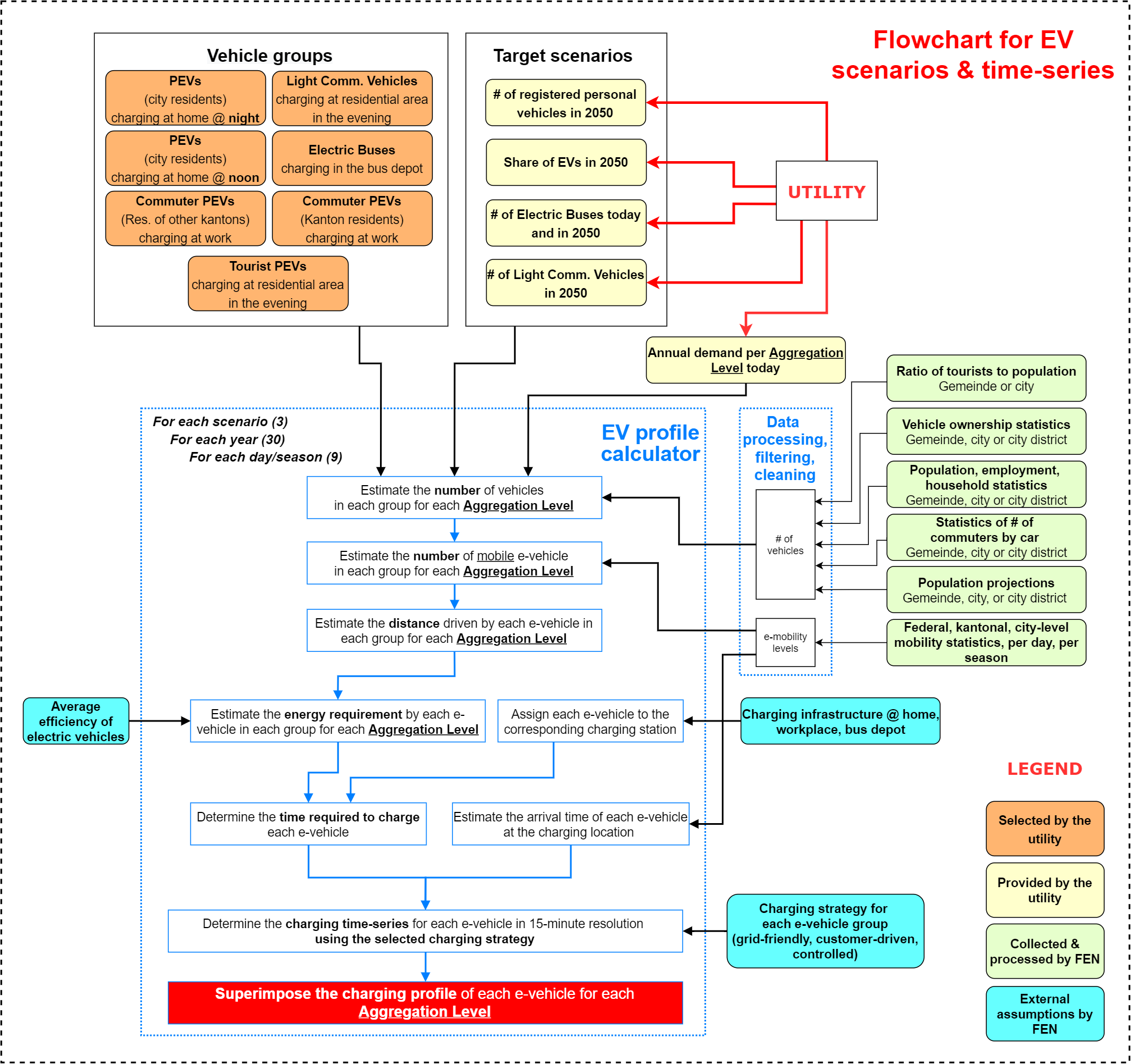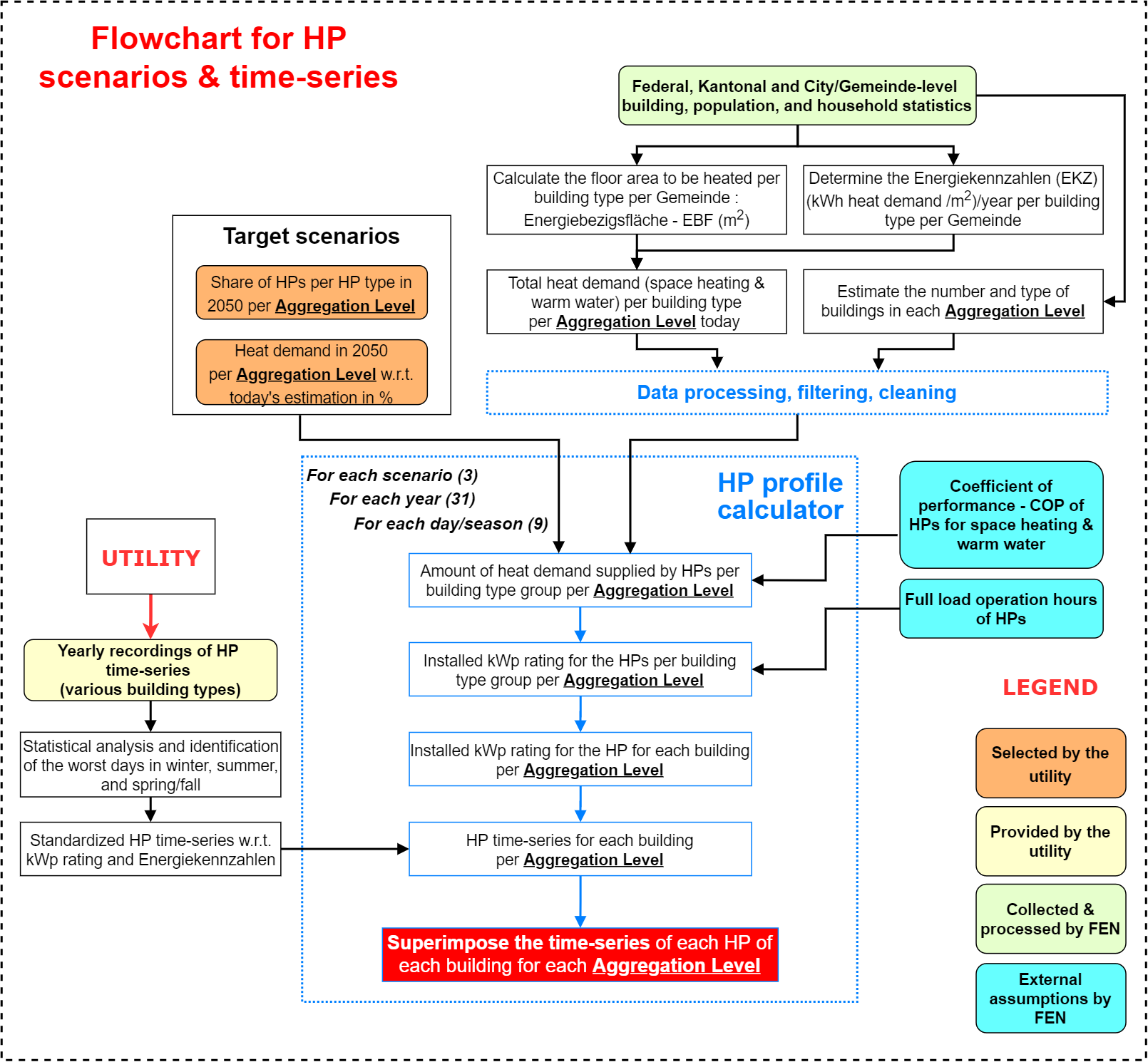Supporting 2050+ reference scenario development
The objective of the study is to identify three projections (low, medium and high) for the following technologies for every year between 2022 and 2050, within the service territory of a Swiss electric distribution utility:
- Electric vehicles (including the noon and evening charging at home as well as office charging by the commuters)
- the number of EVs
- the number of EVs that are mobile daily
- the total travelled distance by EVs (in km)
- the total electric energy required to charge the mobile EVs (in kWh)
- the time series of EV charging based on arrival times in 15-min intervals for nine (9) representative days
- Heat pumps
- the total installed capacity of HPs (in kW)
- the time series of HP in 15-min intervals for nine (9) representative days
The utility plans to update its 2050 projections of proliferation of personal electric vehicles (EV) and electric heat pumps (HP) in its service territories (urban and rural). The utility is interested not only in the projections for the year of 2050, but also in the yearly progress of proliferation of these technologies. In addition, it plans to identify granulized (i.e., spatial high resolution) projections instead of projections aggregated at the level of the service territory, such as the city or region. The utility identified options for spatial resolution as either at the level of postcodes or at the level of LV transformers (i.e., NE6).
Finally, the utility needs the time-series of EV charging and HP operation at the level of aggregation (e.g., at each LV transformer, at the zipcode level), for each estimated proliferation level at each year, for nine (9) representative days: working days, Saturdays and Sundays for winter, summer, and spring/fall in order to be able to identify whether there will be thermal or voltage violations in its service territories.
The methodology for EVs considers the following:
- The location of charging (residential and office)
- The charging infrastructure (2.3, 3.6, 7.4, 11, 22 kW, etc.)
- The average EV efficiencies
- Different types of vehicles (personal cars, light commercial vehicles, buses, tourist vehicles, commuter vehicles)
- The average statistics on daily use of autos (Reference example: the report by BfS titled “external page Verkehrsvehalten de Bevölkerung” published in 2017)
- Different charging strategies (grid-friendy, uncoordinated, etc.)
- Previous proliferation scenarios (e.g., the report by ARE titled external page “Perspektiven des Schweizerischen Personen- und Güterverkehrs bis 2040” published in 2016; the report by EBP titled “external page Szenarien der Elektromobilität in der Schweiz” published in 2020)
- The charging patterns, which constitute the time-series, are generated by using statistical approximations of the driving behaviours based on the most recently published statistics such as in the report by BfS titled “Verkehrsvehalten de Bevölkerung” published in 2017.
The methodology for HPs considers the following:
- The type of HPs and efficiency of HPs
- Area to be heated per building type (Energiebezugsfläche, EBF in m2)
- The average heat demand per building type/age required per m2 per year (Energiekennzahlen, EKZ, kWh/m2 /year)
- Time-series are based on statistica analysis of HP operation in various multi-family houses, shared by the utility.

